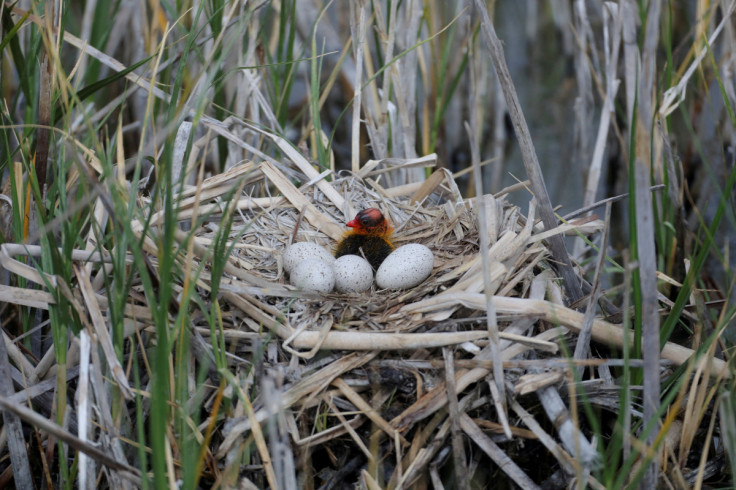'Worrying' Trend: 'Wide Variety' Of Birds Use Man-Made Things In Their Nests

KEY POINTS
- Birds use man-made materials in nest building
- It includes items like foil, food wrappers, cigarette butts and even glass
- They have both risks and benefits for birds
Over 170 bird species today include man-made materials into the nests that they build, researchers have found. This could have both benefits and risks.
Humans have quite a huge impact on the planet. We tend to take over a lot of space and discard quite a lot of man-made materials into the environment. This has had many impacts on the animals that are dwelling with us.
In the case of birds, they include man-made things while building their nests. So, among the items like branches, sticks and mud that they build their nests with, one may just find items like cigarette buts, plastic strings and candy wrappers as well.
In a study, which was included in the special issue of the Philosophical Transactions of the Royal Society B, a team of researchers found that 176 bird species from around the world now include man-made materials in their nests, Bangor University noted in a release. This included items like, foil, fishing line, string, thread, paper, cigarette butts, food packaging, polyurethane foam and even glass.
Interestingly, these materials may have both benefits and negative impacts on birds. For instance, nicotine in cigarette butts may repel ectoparasites, while plastic films may help keep the birds warm.
There are also many potential harms posed by these materials. For instance, the birds may eat them, mistaking them for food, and they can also get entangled in things like strings and threats. These items may even attract predators.
"A wide variety of bird species included anthropogenic materials into their nests," study lead author Zuzanna Jagiełło of the Poznań University of Life Sciences in Poland, said calling it "worrying" because of the potential harm on both nestlings and adults. "(M)ore studies are needed to gain a more complete understanding of how many bird species worldwide include such materials into their nests for us to fully comprehend the extent of the problem."
Researchers looked into the possible reasons behind why some birds incorporate man-made materials to their nests while others don't do it as much.
They found that factors like sexual dimorphism and the nest type "significantly influenced" usage of such items, supporting the hypothesis that the materials "reflect the quality of the nest builder." However, they didn't find evidence supporting the hypotheses related to age or new location, which suggests "that it is widespread throughout birds."
Overall, the study adds to the body of research showing how humans have been affecting the animals that we are co-existing with.
In a 2019 study, which looked at anthropogenic material in birds' nests, researchers found that "incorporation of debris is correlated with increasing human influence on the environment."
In a way, birds' usage of man-made materials help monitor the extent of the pollution, said study second author Jim Reynolds of Centre for Ornithology at the University of Birmingham in the U.K. Perhaps, it could serve as a stark reminder of just how much we are impacting the world around us.
© Copyright IBTimes 2025. All rights reserved.






















